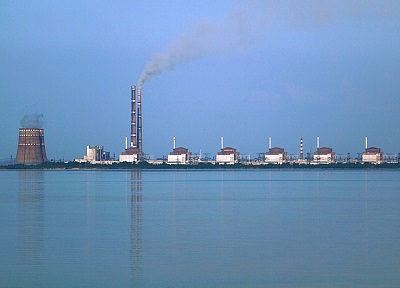Hi, Dr. Zoomie – welcome back! Now what’s the deal with the Zaporishzha Zaprasishka Zaporishisha Zaporizhzhia nuclear reactor – and why does it still need power?
So let’s see…since the Russian Army invaded Ukraine in February, 2022 the Zaporizhzhia nuclear power station (with 6 reactors and an output of 5700 MW, it’s Europe’s largest nuclear energy facility) has been shelled, occupied, had a fire break out, lost and regained external power (more on this shortly), suffered damage to buildings (including one in which radioactive waste was stored), been unilaterally “transferred” to Russian control, and more. On the bright side, it hasn’t melted down! But the International Atomic Energy Agency has been concerned about…well…all of the above, as well as the continuing presence of soldiers, shooting, and other war-type activities that flare up every now and again. And we’re still worried about reactors and spent fuel pools melting down…which seems like an odd concern, given that all the reactors have been shut down for several months. What gives?

Two power stations at Enerhodar, about 50 km from Zaporozhye in Ukraine, viewed from across the Kakhovka Reservoir on the river Dnieper. Image reference: https://commons.wikimedia.org/wiki/File:Kernkraftwerk_Saporischschja.JPG
Here’s the thing – when a uranium atom fissions it splits into two smaller atoms, called fission products, and each of these fission products is radioactive. So every time one uranium atom fissions it forms two radioactive fission fragments. When these undergo radioactive decay they give off energy; this energy is absorbed by the reactor fuel and causes it to heat up. So even though a reactor is shut down, the decay of these fission products continues to produce heat and if this heat isn’t removed then the core temperature will rise and the reactor core will heat up. If this goes on long enough, the fuel can heat up and can melt down, whether it was shut down weeks, months, or even years earlier, which is why spent reactor fuel is kept in large pools for years after being removed from the reactor. This decay heat is normally removed by circulating water through the reactor core – but doing so requires energy to run the reactor cooling pumps. This is why the loss of power to even a shut-down reactor is a concern, and why we worry about spent fuel as well as the reactor core.
A question that one might ask is why the reactor plant is relying on a handful of power lines to keep from melting down. And it really doesn’t – most reactor plants have multiple power sources for its coolant pumps. During operation the reactor produces its own electrical power, but when the reactor shuts down this isn’t an option. Most reactor plants have emergency diesel generators that kick on when on-site power is lost; these generators can start up and pick up the electrical load within a handful of seconds – certainly fast enough to keep the core cooled. The problem is that diesel generators need diesel fuel to operate and, no matter how large the fuel tank is, it’ll run out at some point. So if all of the reactors are shut down, the diesels run out of fuel, and there’s no power from the local grid…there’s no power for the reactor coolant pumps and the fuel (and spent fuel) can start to heat up. Let it go long enough and, unless there’s another way to cool the reactor core, it’s going to start heating up. That was a concern at Fukushima and it remains a concern at Zaporizhzhia.
It seems reasonable to wonder how long we have to worry about the power supply at Zaporizhzhia. Sadly, the answer is that this is going to be a concern for longer than the war is likely to last. Regardless of whose hands the reactors end up in (Russian or Ukrainian), as long as there’s enough power to run the reactor coolant pumps, the core will remain cool and it won’t melt down. Let’s hope that the power lines remain intact.